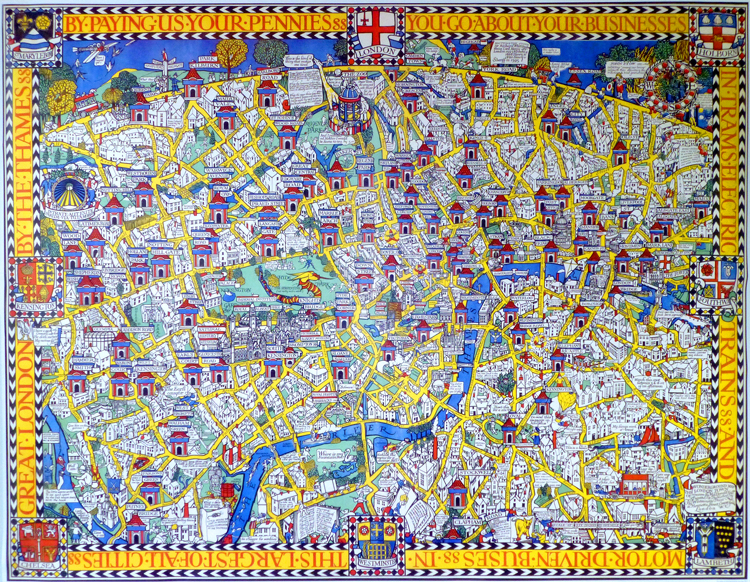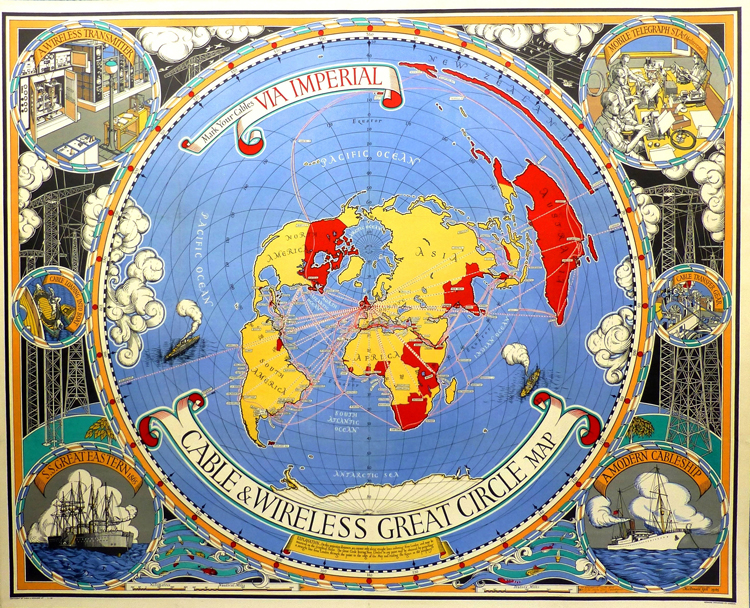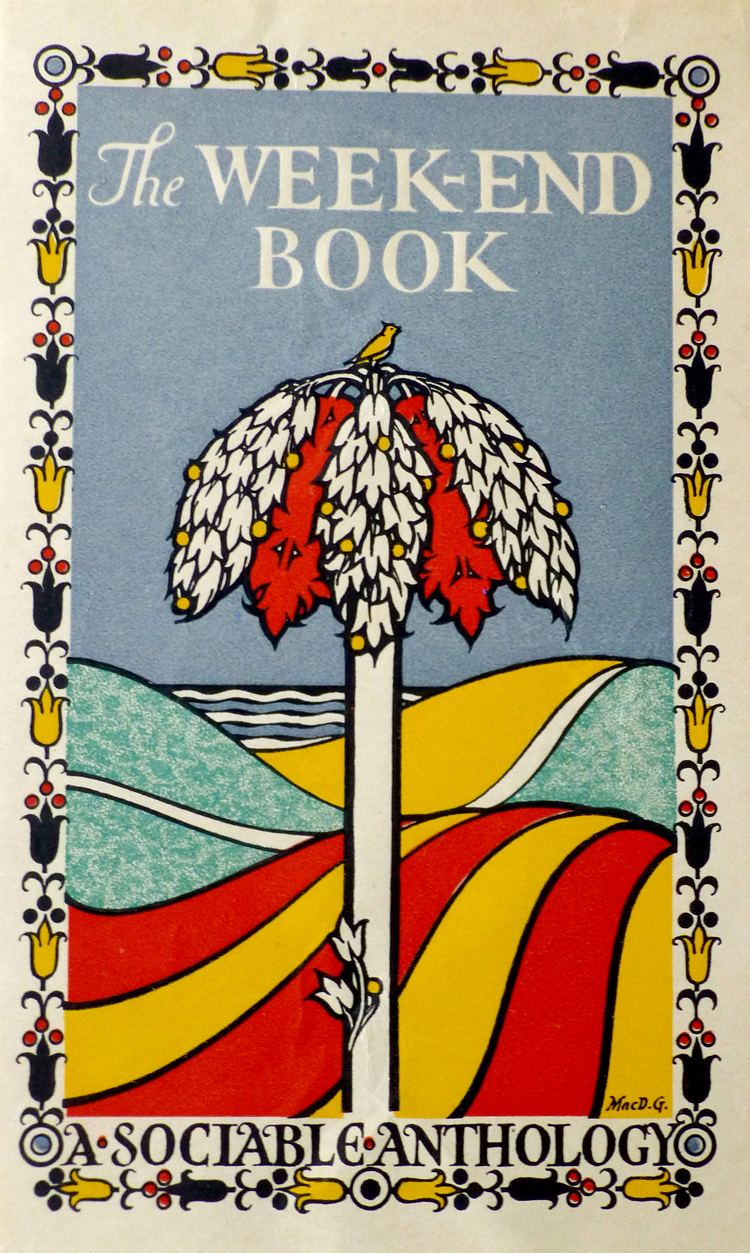Max Gill: forgotten designer, architect and map-making extraordinaire
An exhibition at the Ditchling Museum of Art and Craft looks to share the story of architect, graphic designer and illustrator Max Gill, who throughout the 20th century, designed London Underground tube maps, advertising posters and even entire villages in Sussex. We speak to co-curator and Max’s great niece Caroline Walker about how the show hopes to celebrate the designer’s long-lost talents, tell an alternative story of 20th century England and rid associations of his controversial brother Eric.

Giraffes, elephants and lions huddle around London Zoo in Regent’s Park, miniature houses cram together in South London, a plane does a loop-the-loop near Queen’s Park, while old-fashioned automobiles and horse-and-carriages make their way through Hampstead and Highgate.
These are just some of the intricate details found in designer and architect Macdonald (Max) Gill’s most famous London map. The Wonderground Map, first published in 1914, was used as an advertising poster at every London Underground tube station, brightening up commuters’ days with its joyous depictions of new technology such as commercial flight, as they prepared doomfully for the imminent war that was soon to hit the country.
Max Gill, who was born in Brighton in 1884 and died in West London in 1947, was the lesser-known brother of infamous and controversial sculptor, typographer and designer Eric Gill.
Eric, who has been internationally lauded for his work, much of which centred around eroticism and body-forms, particularly those of women, has a darker side to his story. In 1989, a biography was published long after his death shaming him as a sexual deviant, who had allegedly sexually abused his daughters. Yet despite his personal life, Eric is still famed for his work as a designer and artist.

His brother Max, who was not embroiled in the same scandals, remains in the shadows. An exhibition at the Ditchling Museum of Art and Craft attempts to remedy this. Max Gill: Wonderground Man delves into the work of the architect, map-maker, graphic designer and typographer, whose story first started unravelling when his great niece, Caroline Walker, discovered archives in his former cottage in Sussex in 2007.
Walker, who has co-curated the exhibition, first took an interest in Max when she discovered an old, grease-stained map that had once been stuck to the wall of her mother and father’s kitchen when she was a child. Finding it many years later in a chest at her grandparents’ house, Walker decided to delve into the history of the prolific map-maker.
Her research led her to an interesting place. Having known that famed typographer and calligrapher Edward Johnston, best known for the Johnston typeface used on the London Underground, had once taught both Max and Eric, Walker contacted the Ditchling Museum of Art and Craft to see if she could trace someone in the Johnston family who may have known Max.
The museum pointed her in the direction of Andrew Johnston – Edward’s grandson, who had inherited Max’s cottage in Sussex from him many years before. The story goes that Max had left his wife for Priscilla Johnston, Edward’s youngest daughter, and so had lived with her in Sussex, with the Johnston family going on to inherit his cottage after they both died.

Walker found chests of Max’s work, wrapped in brown paper and tied with string, in the cottage. These originals were used to trace Max’s design career and history.
Following an initial show at the The Lettering Arts Centre in Snape Maltings in 2014, the archive has now been repurposed for a second major show in Ditchling, which looks to highlight the impact Max made on graphics and advertising in the 1910s and 1920s.
“Eric is infamous yet there has been so little told about his younger brother by two years,” Walker says. “Eric was a self-publicist, whereas Max’s style was modesty. But most modern poster-makers who take a pictorial or illustrative style owe a lot to Max Gill.”
His work does well to capture “a moment in time”, adds Walker, and what may appear old-fashioned to a 2018 audience, seemed “very contemporary” to London’s travellers in 1914. While Eric’s work was predominantly erotic, Max was fascinated by technology, exploring new-found discoveries such as commercial flight, the first buses and automobiles, phone lines and communications, and electricity, using these as recurring motifs in his work.

His Wonderground Map poster, published in 1914, is arguably his best-known work. The piece was a detailed and illustrative map of London, including all of its quirks and sights such as the zoo and its parks, through to contemporary motifs such as planes and buses. It was a huge success, plastered on the walls of every London Underground tube station, and went on to win Max many more commissions.
While humorous and light-hearted, his graphic contribution to public spaces led to more serious work. In 1917, he was appointed by the Imperial War Graves Commission to design the lettering to be used on the Cenotaph war memorial in Whitehall, and on every military headstone since the First World War.
His map work also ventured into informative realms, as well as illustrative and entertaining. Frank Pick, known for commissioning many of the icons and designs that still feature on the London Underground today, chose Max to create wayfinding and route maps for transport systems across the capital. This included an early version of the London Underground map in 1922 and a London Underground Bus Services Map in 1928.

Some pieces combine both frivolous illustration and information; the Cable and Wireless Great Circle Map, designed by Gill in 1945, depicted the paths created by radio beams from London across the world, playfully using London as the focal, central point of the map. An advertising poster for Cable and Wireless, the map was given extra colour with illustrations around the border of wireless transmitters, telegraph offices and cableships.
Some were much smaller scale – a postcard created for Ceylon tea depicts the route of Ceylon in Sri Lanka’s thriving tea industry, while others had an injection of humour. The Highways of Empire map, published in 1927, was a propaganda poster celebrating trade across the British empire. The detailed map featured minuscule little quips and in-jokes placed by Max – such as two tiny polar bears sat at the South end of the map, asking each other why they were not in the North Pole.

Aside from posters and maps, Max also produced book covers, postcards, murals and also built structures, making use of his formal architectural training. Alongside his graphics, the exhibition features scale drawings and sketches of cottages he designed in a village in Dorset during the First World War.
The exhibition is mostly chronological, and separated into sections, starting with his London Underground and map-work, moving onto his architecture, then followed by several display cases. One features his smaller graphics, such as book covers and postcards.
A vertical display cabinet containing his original tools and equipment looks to offer visitors insight into his work process, from paintbrushes and quills to pencils and architectural instruments.
Finally, three display cabinets at the back delve into Max’s personal life, attempting to tell the designer’s long-forgotten story.
Individually, they focus on his family life growing up, his romantic relationship with novelist and writer Priscilla Johnston, and finally his relationships with Eric and Edward Johnston.

By showcasing personal memoirs and letters, this section reveals the “incredible extremes” between the two brothers, says Walker, while also highlighting Eric’s hypocrisy. Original letters from Eric to Max reveal Eric’s disdain towards Max’s relationship with Priscilla, calling him “mad, bad and un-Christian” for leaving his wife.
“This really was the pot calling the kettle black!” Walker says. “We wanted to show that Max was a completely different character. We wanted to bring a very talented artist out of the shadows to the wider public.
“We also want to separate his work from his brother’s,” she says, adding that, throughout their professional lives, Eric had inaccurately been given credit for much of Max’s work. “Their work is so different – while Eric’s was sexual and erotic, Max was interested in technical things and humour. He had a very different personality.”

While this is the second major show of Max’s work in five years, with the first exploration of his archives taking place at the Lettering Arts Centre in Snape Maltings in 2014, Eric has been attributed a place in many major museums over the years, including the Tate, the Barbican and the British Museum. While art might live on posthumously, it is difficult to ignore the moral debate of whether someone who committed sordid crimes should still be celebrated today.
“I love some of Eric’s art, it’s very beautiful,” says Walker. “But it is extremely difficult to disentangle the art from the man. You can never now dissociate what you’re looking at from the things he did – his work is tainted.”
Ultimately, Max Gill: Wonderground Man looks to dissociate the life and work of Max from that of his infamous older brother’s and showcase it in its own right. Rather than depicting him purely as a “map-maker”, the Ditchling Museum of Art and Craft looks to show the breadth of design he covered, as well as his artistic and illustrative way of depicting current events.
“Max wasn’t a political person, but his work as a commercial artist touched on the news and happenings of the time, from the introduction of planes to phone lines to radio communication,” she says. “Through showing his pictorial 20th century style, we’ve tried to offer another way of looking at history – while giving people the revelation that there is another Gill brother they don’t know about.”
Max Gill: Wonderground Man runs at the Ditchling Museum of Art and Craft until 28 April 2019. Entry is free. For more information, head here.









Visited this exhibition on Saturday and really enjoyed it. Although the work is of a period its colours and richness are really engaging. The maps are so rich in detail and full of witticisms. The work he did for the Imperial War Graves Commission is equally impactful for its contrasting simple beauty. I also visited the Eric Gill exhibition at the museum, so it was interesting to compare the two brothers.
A tad late with this one from Design Week as it ended in April! But I did get to see it and Giles has summed it up perfectly. I found the War Graves Commission work particularly beautiful. Such respect for the fallen especially when you contrast it with the ways that the French and German WW1 graves are treated.